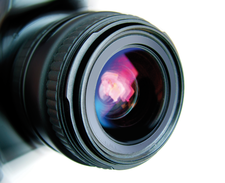Remotely controlling digital cameras with gPhoto
In Charge

© hypermania2, 123RF
Commercial software that lets users remotely control their camera usually is not available for Linux. gPhoto gives users a free alternative.
Some vendors offer commercial add-ons to help users remotely control their cameras – for example, to take a series of photos at set intervals. Time exposures of the night sky and time-lapse photos of a growing plant are excellent choices of subject as well. However, vendors such as Canon and Nikon only offer their software for Windows and the Mac OS, and Nikon even charges for the program [1]. To make things worse, the software is closed source and not suitable for scripting, which tends to restrict its usefulness.
gPhoto
The gPhoto [2] project mainly comprises the libgphoto2 library, the gphoto2 command-line interface, and the gtkam front end (see also the "Gtkam Graphical Front End" box). The software lets users read and change the status of their digital cameras, copy files in both directions, and remotely control digital cameras.
As of this writing, gPhoto supports more than 1,100 digital camera models. A lack of cooperation on the part of camera manufacturers has forced developers to reverse engineer most of the protocol information and explains why the software does not support all of the features that are available on every single digital camera.
[...]
Buy this article as PDF
(incl. VAT)
Buy Linux Magazine
Subscribe to our Linux Newsletters
Find Linux and Open Source Jobs
Subscribe to our ADMIN Newsletters
Support Our Work
Linux Magazine content is made possible with support from readers like you. Please consider contributing when you’ve found an article to be beneficial.

News
-
Parrot OS Switches to KDE Plasma Desktop
Yet another distro is making the move to the KDE Plasma desktop.
-
TUXEDO Announces Gemini 17
TUXEDO Computers has released the fourth generation of its Gemini laptop with plenty of updates.
-
Two New Distros Adopt Enlightenment
MX Moksha and AV Linux 25 join ranks with Bodhi Linux and embrace the Enlightenment desktop.
-
Solus Linux 4.8 Removes Python 2
Solus Linux 4.8 has been released with the latest Linux kernel, updated desktops, and a key removal.
-
Zorin OS 18 Hits over a Million Downloads
If you doubt Linux isn't gaining popularity, you only have to look at Zorin OS's download numbers.
-
TUXEDO Computers Scraps Snapdragon X1E-Based Laptop
Due to issues with a Snapdragon CPU, TUXEDO Computers has cancelled its plans to release a laptop based on this elite hardware.
-
Debian Unleashes Debian Libre Live
Debian Libre Live keeps your machine free of proprietary software.
-
Valve Announces Pending Release of Steam Machine
Shout it to the heavens: Steam Machine, powered by Linux, is set to arrive in 2026.
-
Happy Birthday, ADMIN Magazine!
ADMIN is celebrating its 15th anniversary with issue #90.
-
Another Linux Malware Discovered
Russian hackers use Hyper-V to hide malware within Linux virtual machines.

